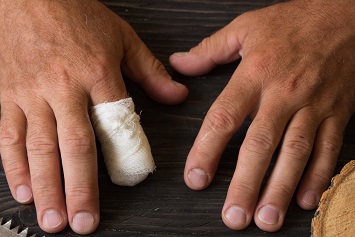The Occupational Safety and Health Administration (OSHA) revised its National Emphasis Program (NEP) for enforcement related to amputations in manufacturing, the agency announced December 17. The NEP targets employers for enforcement of machine guarding standards to reduce or eliminate amputation hazards.
The directive (CPL 03-00-022) makes the following updates to the 2015 NEP on amputations:
- Revises targeting methodology to include data from amputation reporting requirements in 29 CFR §1904.39;
- Revises coding requirements for amputation inspections in the OSHA Information System (OIS); and
- Adds new appendices on the agency’s amputations targeting methodology and covered North American Industry Classification System (NAICS) codes.
The new directive also removes an appendix on related American National Standards Institute (ANSI)/American Society of Mechanical Engineers (ASME) standards included in the earlier NEP.
Enforcement activities will begin after a 90-day education and outreach period, which will run until March 10, 2020. The NEP directive remains in effect until canceled. During the education and outreach period, OSHA will continue to respond to complaints, fatalities, hospitalizations, and referrals.
The directive covers facilities within the fabricated metal product, food, furniture and related product, machinery, nonmetallic mineral product, paper, plastics and rubber, primary metal, transportation equipment, and wood product manufacturing subsectors.
States with OSHA-approved programs are expected to have enforcement procedures at least as effective as those in the agency’s directive.
Targeting Methodology
OSHA’s amputations NEP covers 75 six-digit NAICS codes. The agency looked at four categories of data to compile its list of covered industries—industries with high inspection numbers for standards related to amputation hazards, high Bureau of Labor Statistics (BLS) injury rates, high BLS amputation numbers, and high employer-reported amputation numbers.
To compile its list of covered industries, the agency:
- Selected five standards generally recognized as related to amputation hazards—Control of Hazardous Energy (Lockout-Tagout; 29 CFR §1910.147), General Requirements for All Machines (1910.212), Woodworking Machinery Requirements (1910.213), Mechanical Power Presses (1910.217), and Mechanical Power-Transmission Apparatus (1910.219);
- Searched OIS data covering calendar years 2015–2018 to identify industries with 40 or more federal OSHA inspections with one or more violations of the selected standards;
- Used four years of BLS injury and illness data for calendar years 2014–2017 to find incidence rates for nonfatal occupational injuries and illnesses involving days away from work per 10,000 full-time workers, and selected NAICS codes with BLS incidence rates of 7.5 or greater for amputations for any year, which is 2.5 times the average incidence rate of 3.0 for manufacturing;
- Analyzed four years of BLS data for calendar years 2014–2017 on the number of amputations, selecting NAICS codes with 50 or more amputations per year; and
- Reviewed all employer-reported referrals in OIS with at least one amputation reported, selecting NAICS codes with 25 or more reported amputations per year for calendar years 2015–2018.
OSHA area offices must generate establishment targeting lists using software provided by the agency’s Office of Statistical Analysis. Area offices must use the code “AMPUTATE” to record inspections under the NEP in OIS. The agency also encouraged area offices to involve On-Site Consultation Programs in compliance assistance focused on workplace hazards associated with amputations in manufacturing industries.

